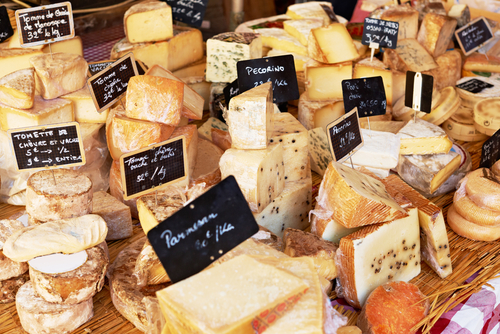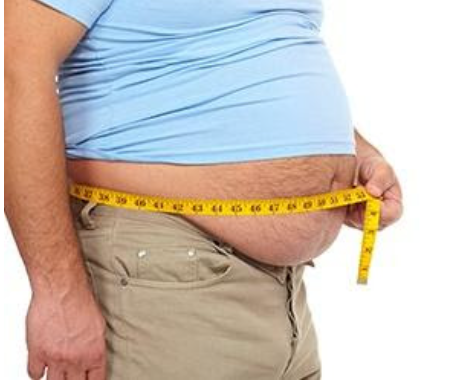We can thank the French or a lot of things: croissants, Chanel, Bridget Bardot, and proving to the world that eating fat does not make you fat or give you heart disease.
Called the “French paradox,” the phenomenon describes the French’s relatively low rates of heart disease and obesity despite the fact their diets consist of high levels of saturated fat and cholesterol compared to the diets of other Western countries. Something even more interesting is the fact that when Americans move to France to live, they tend to lose weight, and when the French come to the US, they tend to gain weight.
When you think of some of the main food staples in the French diet like butter, cream, cheese, fatty liver pate and pastries, how can they have much lower rates of heart disease and obesity than the United States when we’re the ones who have been obsessed with a low-fat diet for decades now?
Many have chimed in on this paradox and given their opinions as to how it can exist. We will share those with you now.
And then we will give you another important fact at the end.
The French Drink Red Wine
The drinking of red wine is the biggest paradox contributor nutritionists, doctors and researchers will point to. The French are known to enjoy a moderate amount of wine with their meals, and some think the resveratrol and flavonoids in red wine may help fight heart disease.
Resveratrol is known to inhibit the formation of inflammation that trigger cardiovascular disease, and red grapes are one of the richest sources of flavonoids which would indicate why red wine has more health benefits than, say, beer. However, the wine theory does not really support the low rates of obesity. On top of that, research on red grapes found that when flavonoids are extracted they do exert health benefits, but the amount of red wine you would have to consume to get enough resveratrols would be toxic.
The French Eat Slowly
Fast food is a purely American concept. Not only do we want to get our food served to us in less than three minutes, we tend to eat the entire meal in about the same amount of time. The French on the other hand take their time and enjoy meals that come with multiple courses. They savor each bite of food and the entire meal could take as long as 3 hours to eat.
So how does this help them have less obesity and heart disease? Well, research shows it takes our brain around 15 minutes to start signaling feelings of fullness. A French person may realistically eat half the amount of calories as an American who shoveled in far too much food in the same amount of time.
Also the French live in an environment that encourages slow, social eating while Americans have a totally different relationship with food. For instance, in this country it is not uncommon for an entire family to sit in front of the TV and gulp down their meal without really tasting or enjoying it, let alone interacting with each other. We eat while we’re on the phone and computer as well, and are often not mindful of what we are putting into our bodies or just how much.
The French Eat Smaller Portions
It has been proven time and time again that portion size is directly related to weight loss and management. The French paradox could also have something to do with the fact that French portion sizes are considerably smaller than American portion sizes. You most likely won’t find a translation for “supersize” in French.
Here’s an example of the difference in portion sizes: in France an individual size portion of yogurt is 125 grams, in this country a standard size portion is 225 grams. Here’s another eye-opening example: Chinese restaurants in Philadelphia served dishes that were 72% larger than Chinese food restaurants in Paris.
So, though the French do indeed enjoy cream, butter, cheese and pastries with pretty much every meal, they consume fewer calories at each meal which would point to a society of people who are not struggling with their weight.
The French Eat a Lot of Fruits and Vegetables
We all know that a diet high in fruits in vegetables is associated with lower risks of heart disease. And, unless deep fried or drenched in oil or dressing, vegetables tend to have fewer calories than other foods. Seeing as the French eat plenty of fruits and vegetables perhaps this is why they are able to stay slim and not die as often of heart attacks?
The French Focus on Quality of Food Over Quantity of Food
The French tend to turn their noses up at processed junk food. Americans tend to fall in love with it. In general, the country of France is a country of original foodies who are far pickier with what they consume than other countries. Should you suggest a Frenchman eat a frozen TV dinner, they may very well kick you out of their home.
France is still one of those countries that does not rely on huge chain grocery stores. There, people still go to open air markets on a daily basis to buy their produce. Then they walk down the street to the fromagerie to buy their cheese, then over to the bakery to buy their bread, and finally a visit to the boucherie for their meat.
Does it take longer to shop and do they tend to pay more for their food? Yes, but the products are fresher and better quality.
The French Prepare Homemade Food
The French tend to cook meals from scratch more than Americans and by doing so they have more control over their preservative, trans fat, salt and sugar consumption.
The French Don’t Snack
The French simply don’t snack like we do here in the states. They tend to eat 3 regular meals a day. Should they opt for a snack one day because of a later planned dinner with friends or family, they are much more likely to reach for a piece of fruit.
The French Don’t Drink Soda
The preference in France is to drink bottled water with meals instead of sugary soft drinks. This of course would cut down on calorie intake. In fact, according to statistics, the French only consume, on average and per person 37.2 litres of soda a year compared to the 216 litres per person in the United States.
The French Walk Daily
The French walk. A lot. You won’t see throngs of them taking a spinning class at the gym, but you will see them walking around the countryside or walking around the city doing their errands. In fact, many Parisians use their cars only for long-distance travel.
While all of these reasons could contribute to the paradox, we’d like to also add that it is a myth that eating fatty foods causes weight gain and heart disease.
You see, during the last few decades weak scientific theories have claimed that saturated fats-like those found in butter, eggs, milk, and red meat – increased “bad” LDL cholesterol and were dangerous to consume. This “health scare” has pushed the public away from saturated fats and toward refined vegetable oils, which is great for food manufacturers because these oils are far cheaper to produce.
But since people stopped eating the “bad fat” and started consuming “good oils” heart disease, diabetes, cancer and obesity have been on the rise.
There is one oil in particular that has been vilified, and the truth is this oil is the #1 healing superfood that has the ability to:
- Fights bacteria, viruses and yeast
- Helps your body burn fat
- Boosts your thyroid function
- Cures acne and alleviates wrinkles
- Fights Parkinson’s and Alzheimer’s Disease
- Fights cancer
- Reduces blood clots
 Validating...
Validating... 





4 Comments